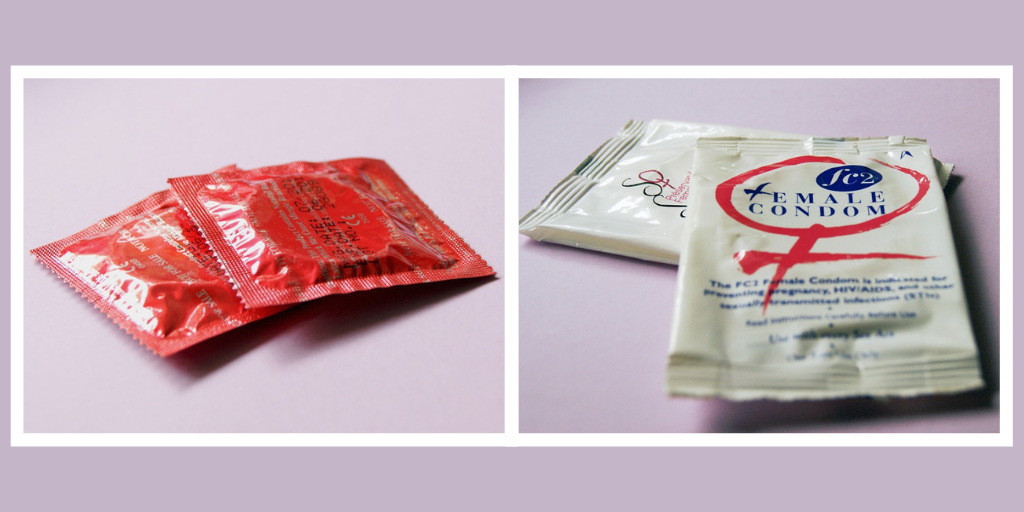Condoms
Condoms are a barrier method of contraception and are the most popular form of contraception because they are readily available from many places such as chemists, dispensers in toilets and at family planning clinics.
Female condoms (femidoms) are also a barrier form of contraception although they are less readily available.

How does it work:
Condoms
Male condoms are made from very thin latex (rubber), polyisoprene or polyurethane. They cover the penis before sex and are designed to stop a man's semen from coming into contact with his sexual partner.
Femidoms
Femidoms are made from soft thin plastic called polyurethane. They are placed inside the vagina at any time before sex and are designed to stop semen from coming into contact with an egg.
How effective is it?
Condoms
If used correctly, condoms are up to 98% effective. This means that up to two women in 100 who use this method will get pregnant in one year. Using them correctly every time is needed to achieve 98% effectiveness. Condoms are also effective against some STI's during vaginal or anal sex.
Femidom
If used correctly, this method is up to 95% effective. This means that up to five women in 100 who use this method will get pregnant in one year.
Added benefits?
Condoms
- There are no major side effects
- Can protect against some sexually transmitted infections (STIs)
- They are available to buy in many places
Femidom
- Can be put in any time before sex
- Can protect against some sexually transmitted infections (STIs)
- Oil based products can be used
- No major side effects
- Free at some sexual health clinics
What else should I know?
Both
- Only use once. Each time you have sex always use a new condom/femidom
- Always check the use-by date so you don't use out-of-date products
- Before using, check for the BSI kite mark and the CE mark on the packet. This means they've been tested to high safety standards.
- Store them in places that aren't too hot or cold, or near things which might cause them to rip or tear
Condoms
- Should be withdrawn as soon as ejaculation has occurred
- If using a latex condom don't use any oil-based lubricants (like moisturiser, lotion or Vaseline) as this may cause it to split. (Water-based lubricants are fine to use)
Femidoms
- May be expensive to buy and difficult to get a hold of
- May get pushed too far into the vagina
- Penis may enter beside the femidom instead of in it
You can find out about male and female condoms by visiting the NHS Choices Website by clicking here.
